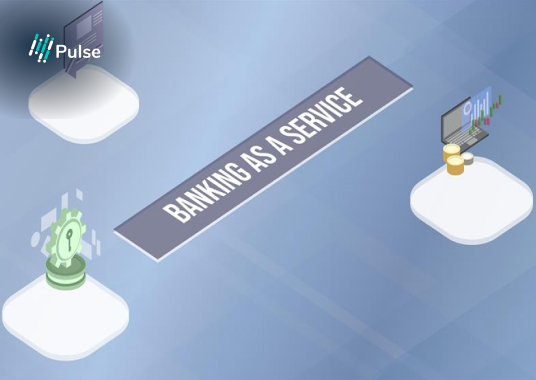In 2025, UK lenders face a paradox: traditional credit-scoring models struggle to assess risk effectively, especially considering today’s varied borrower profiles. In the meantime, competition, regulatory and economic pressures make speed and accuracy indispensable. Embedded lending platforms hold the solution to reshape this scenario with real‑time data, data-rich insights, and context-aware underwriting that goes beyond outdated processes.
Embedded Lending: Contextual Credit Decisioning
Embedded lending integrates financing offers directly into the user journey across various touchpoints. From business accounting software, B2B marketplaces, BI dashboards, or e-commerce checkouts. Instead of making the borrower struggle with tedious procedures, credit decisions are made at the moment of need, using high-fidelity data generated within the platform itself. This context enables lenders to offer smarter, faster, and more relevant financing solutions with a touch of customisation. It also reduces friction and improves decision quality
Tapping into Alternative and Flow-Based Data
Embedded platforms have direct access to non-traditional, yet highly indicative, data sources. For example:
- Cash flow and transactional patterns—like invoicing systems, e-commerce sales, rent, and utility payments- offer a dynamic view of borrower behaviour
- Flow-based underwriting uses real-time business data like accounts receivable and purchase trends to assess viability, enabling revenue-based financing and credit offers based on ongoing performance rather than static credit history.
AI & Machine Learning: Sharpening Risk Models with Scale
AI and ML developments supercharge how embedded systems assess credit:
- AI and ML allow the aggregation of data from diverse sources. This can be bank transactions, credit card usage, behavioural triggers, utility records, ESG metrics and more. Lenders can gauge potential borrowers by looking at much more than traditional bank statements and documents.
- Sophisticated underwriting systems now automate risk evaluation, adaptively incorporating new patterns and outcomes to improve future decisioning accuracy. An excellent example would be Pulse’s Einstein aiDeal. Powered by AI and machine learning, it has the capability of handling thousands of deals simultaneously and can decision 90% of deals in under 60 seconds along with customisable criteria. Einstein aiDeal revolutionises and automates the underwriting process with minimal human intervention.
This allows banks, lenders, aggregators and brokers to expedite, automate and streamline embedded lending and focus on growth, expansion and volumes.
Real-World Platforms Leading the Change
Several UK players embody these embedded-lending advances:
Pulse’s Unified Lending Interface (ULI)
Pulse’s Unified Lending Interface (ULI) offers loan origination, which digitises and reduces the loan application process to under 3 minutes. Pulse’s loan management solution helps track repayments, defaults and delays post-disbursement. Together with automated underwriting, Pulse’s ULI stands to revolutionise the entire lending process.
To learn more about Pulse’s ULI, book a demo today.
These platforms illustrate how embedded lending removes friction, enhances accuracy, and scales underwriting in ways legacy banking can’t.
Strategic Cost & Efficiency Gains
Embedded lending platforms deliver substantial operational and strategic benefits:
- Significantly lower processing costs: Vastly reducing manual review, document handling, and back-office workload.
- Higher application completion rates: Conversion rates are up to 3.5× greater than traditional redirection flows.
- Faster loan fulfilment—embedded offers enable sub‑second decisioning, maintaining engagement and decreasing drop-off.
- Continuously improving risk accuracy: Each application and outcome refines platform algorithms, enhancing portfolio quality over time.
Regulatory Alignment & Consumer Protection
Embedding lending into digital services aligns well with evolving UK regulatory expectations:
- Open banking / open finance frameworks, underpinned by PSD2, GDPR, and the UK’s Data Protection and Digital Information Bill, enable secure data sharing while expanding the data used in lending decisions.
- The FCA’s proposed BNPL affordability checks reflect the incumbent regulator’s insistence that even small embedded credit products must be responsibly issued, a requirement that platforms are increasingly built to bridge.
Risk Oversight & Ethical Architecture
Despite their advantages, embedded platforms must handle risk responsibly:
- Data privacy and GDPR compliance are non-negotiable, especially when using sensitive or behavioural data.
- Bias mitigation in AI models is critical as it requires transparency, auditability, and fairness in decision-making.
- Governance over complex models: Ensures that as platforms learn and adapt, their frameworks remain explainable and aligned with FCA expectations
The Road Ahead for UK Lenders
For traditional banks and new entrants alike, embedded lending is no longer a fringe concept. It’s central to the future of financial services as we know them. Key strategic imperatives include:
- Constructing or partnering for embedded capabilities: Integrating with vertical platforms (e.g., e-commerce, accounting systems) to offer financing at the point of need.
- Prioritising technology over UI: Investing in decisioning engines like Pulse’s Einstein aiDeal, API ecosystems, and orchestration layers to power intelligent lending like Pulse ULI. Choosing functionality over fancy UI.
Conclusion
In the 2025 UK lending landscape, embedded lending platforms elevate credit assessment with agility, data precision, and contextual relevance. By harnessing real-time alternative data, AI-driven risk, underwriting solutions, and integrated workflows, they offer lenders more accurate risk management, reduced costs, and greater customer access. All this without sacrificing regulatory or ethical rigour. As the financial ecosystem elevates expectations for agility and fairness, rethinking risk through embedded models offers both opportunity and imperative for the next step in the evolution of lending in the UK.

















